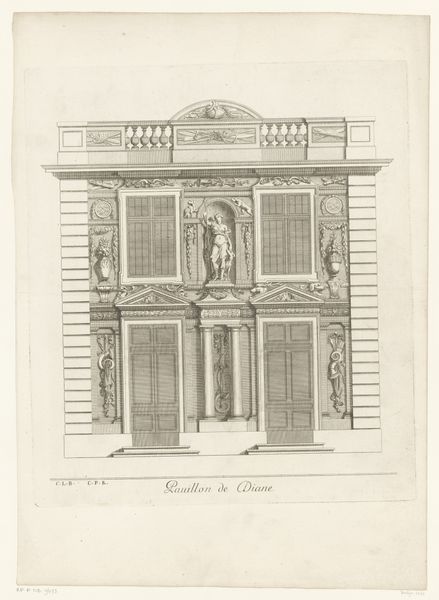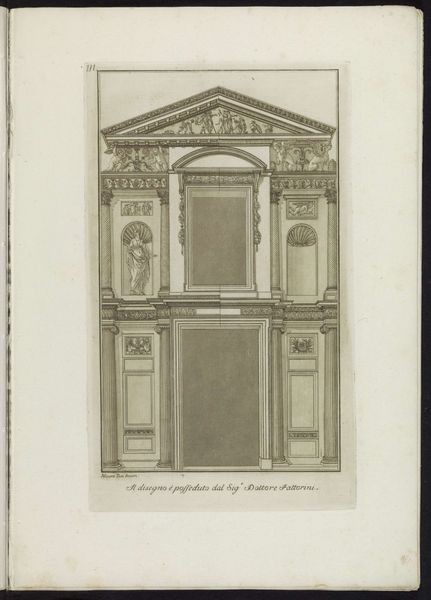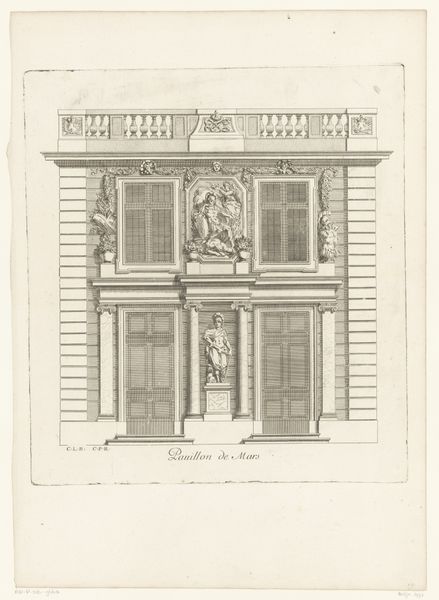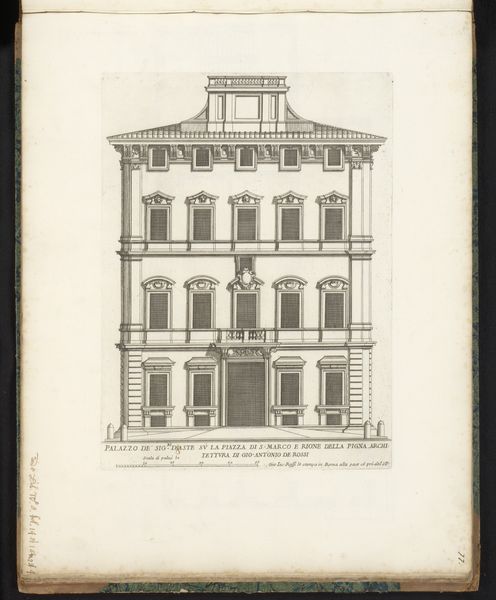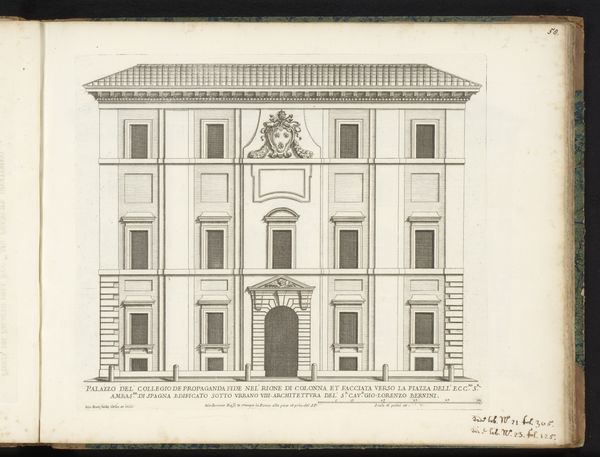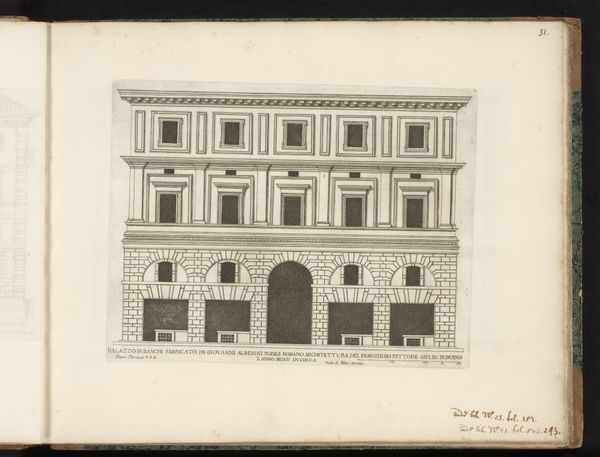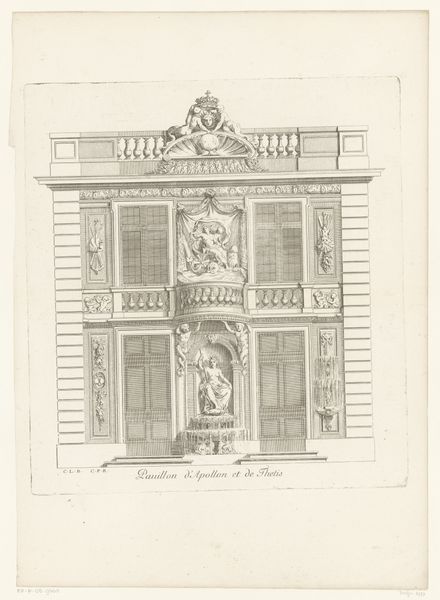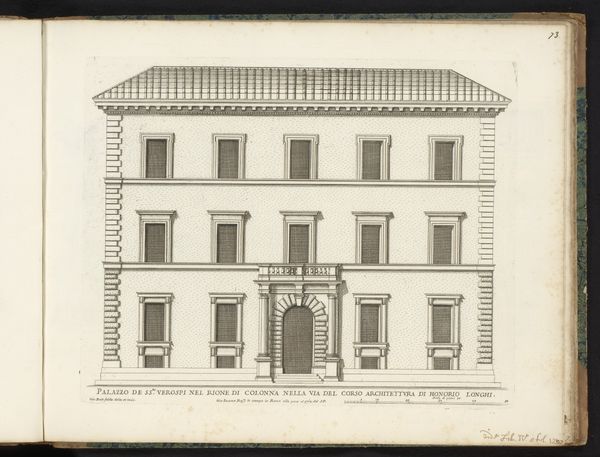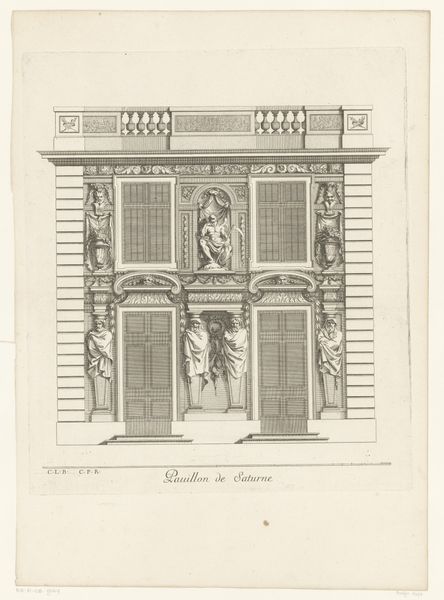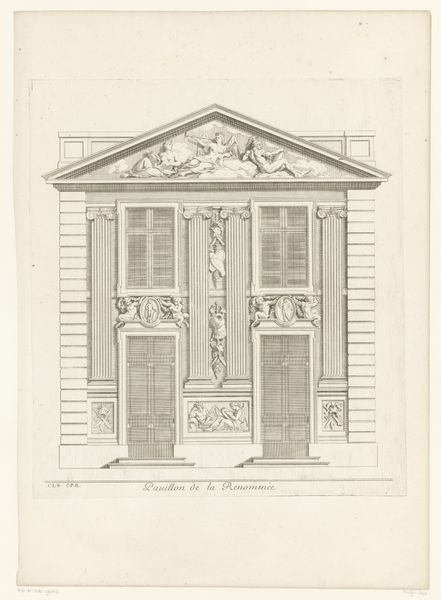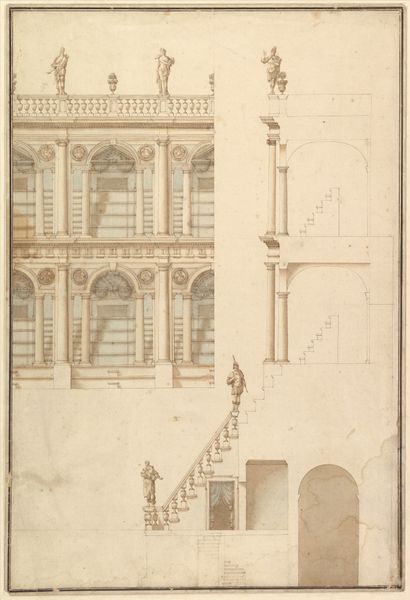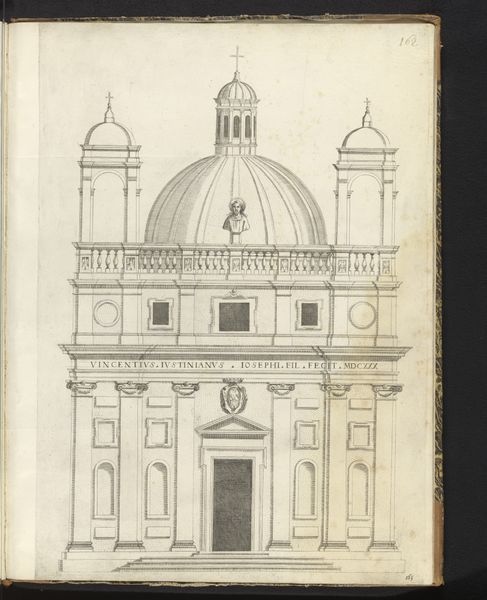
print, engraving, architecture
#
baroque
# print
#
old engraving style
#
geometric
#
line
#
cityscape
#
engraving
#
architecture
Dimensions: height 337 mm, width 244 mm
Copyright: Rijks Museum: Open Domain
Editor: Here we have Giovanni Battista Falda’s "Façade van het casino te Gianicolo alla Lungara," an engraving from after 1655, currently held at the Rijksmuseum. The precision of the lines depicting the architecture is quite striking, almost like an architectural blueprint. What stands out to you most when you look at this image? Curator: What immediately grabs my attention is how this print serves not just as a depiction of a building, but as a piece of propaganda. Prints like these played a vital role in shaping perceptions of power and wealth. This wasn't simply about documenting architecture, it was about communicating status and influence in Baroque Rome. Notice how the inscription highlights the architect's name; the print celebrates his achievement just as much as the patron’s. How do you think this print functioned within the public sphere at the time? Editor: That's fascinating! I hadn’t considered it as a tool for social positioning. Given its clear lines and precision, wouldn’t it also serve as a means of spreading architectural ideas, perhaps influencing other buildings? Curator: Exactly! Dissemination of architectural styles was certainly a function, but it was strategically employed. It provided templates, of sorts, while broadcasting a message of sophisticated taste and power linked to specific families and architects. Do you think the artist subtly communicates a power structure through this choice of representing the casino? Editor: Now that you mention it, perhaps. The casino isn't shown within its surrounding environment, but set against a blank background, which really pushes the focus onto the architecture as a symbol of status and authority. It’s all very calculated. Curator: Precisely. And recognizing this calculated presentation allows us to consider what public roles these types of prints held during the Baroque period. I learned from your perspective how to spot design choices. Thank you! Editor: Likewise! Seeing this as propaganda provides a new lens for understanding how architectural representations operate within a social context. Thanks!
Comments
No comments
Be the first to comment and join the conversation on the ultimate creative platform.
